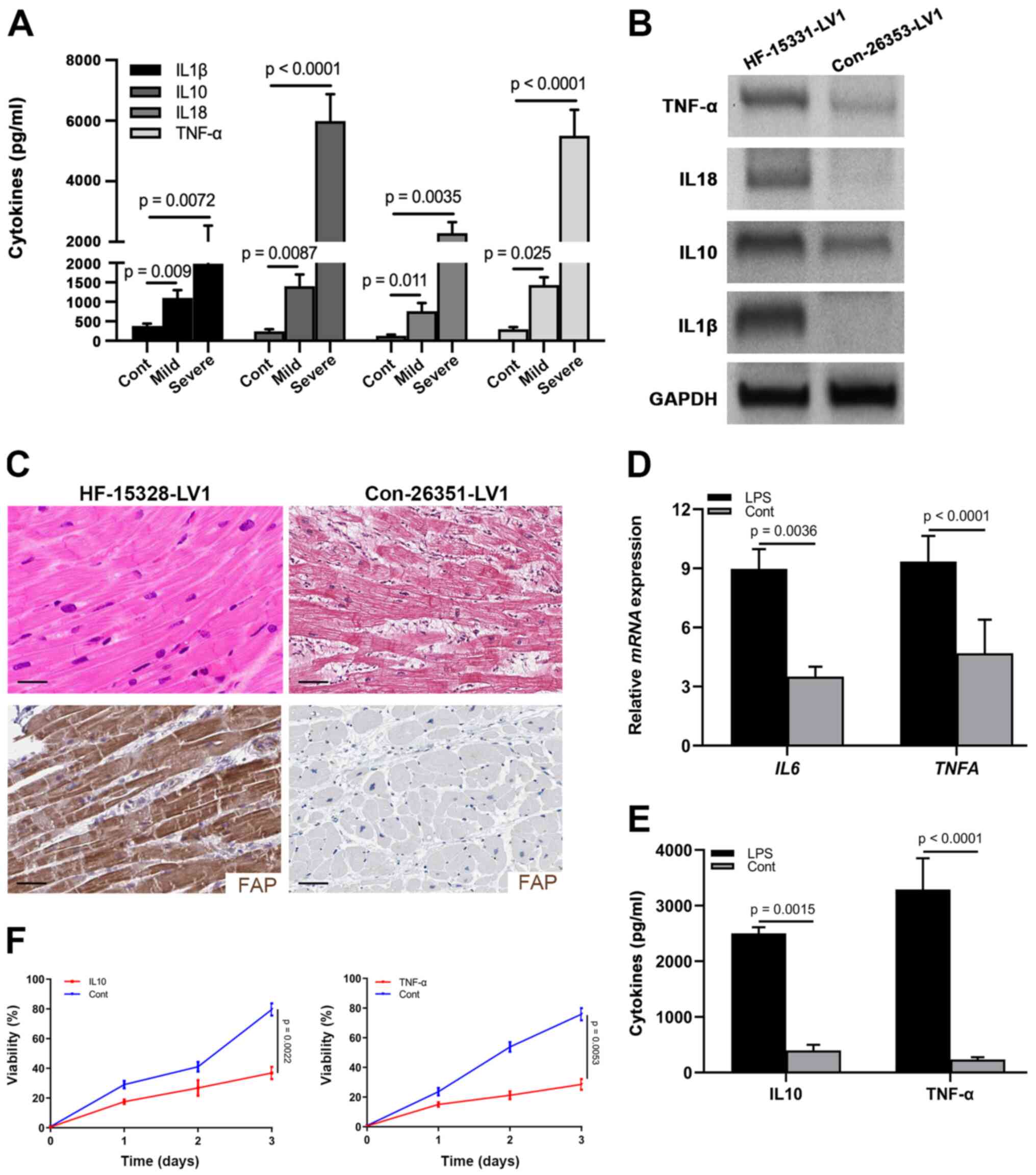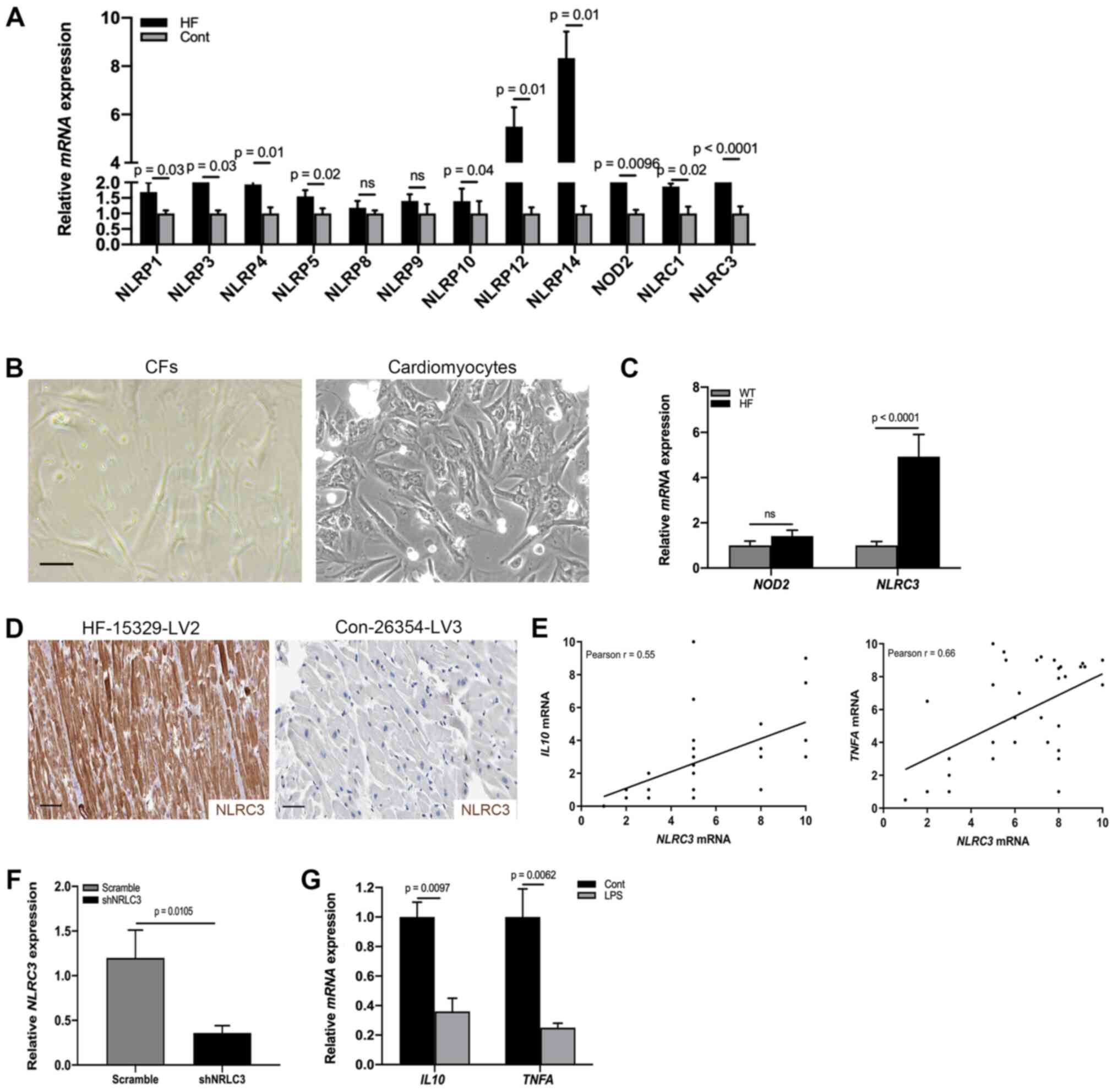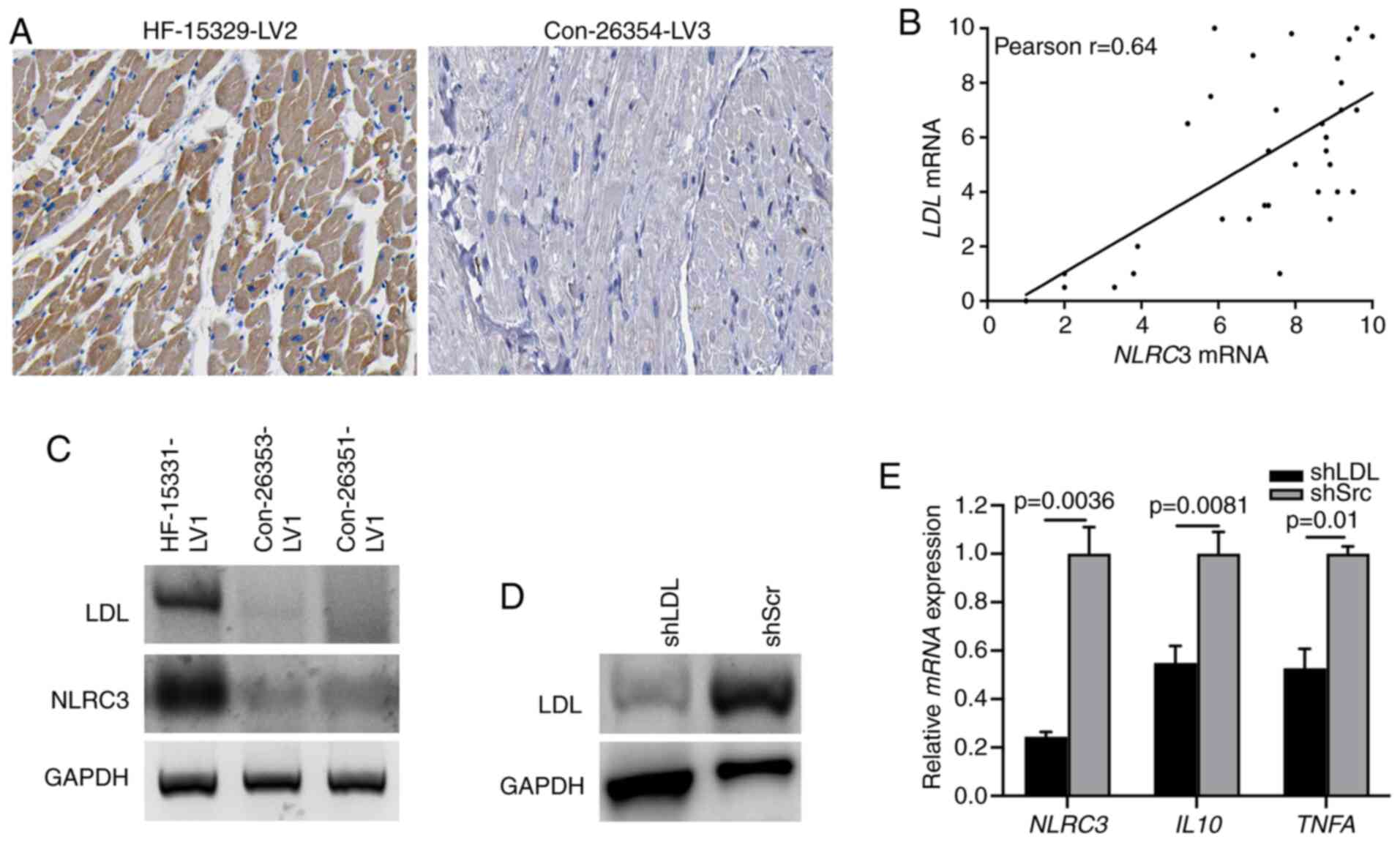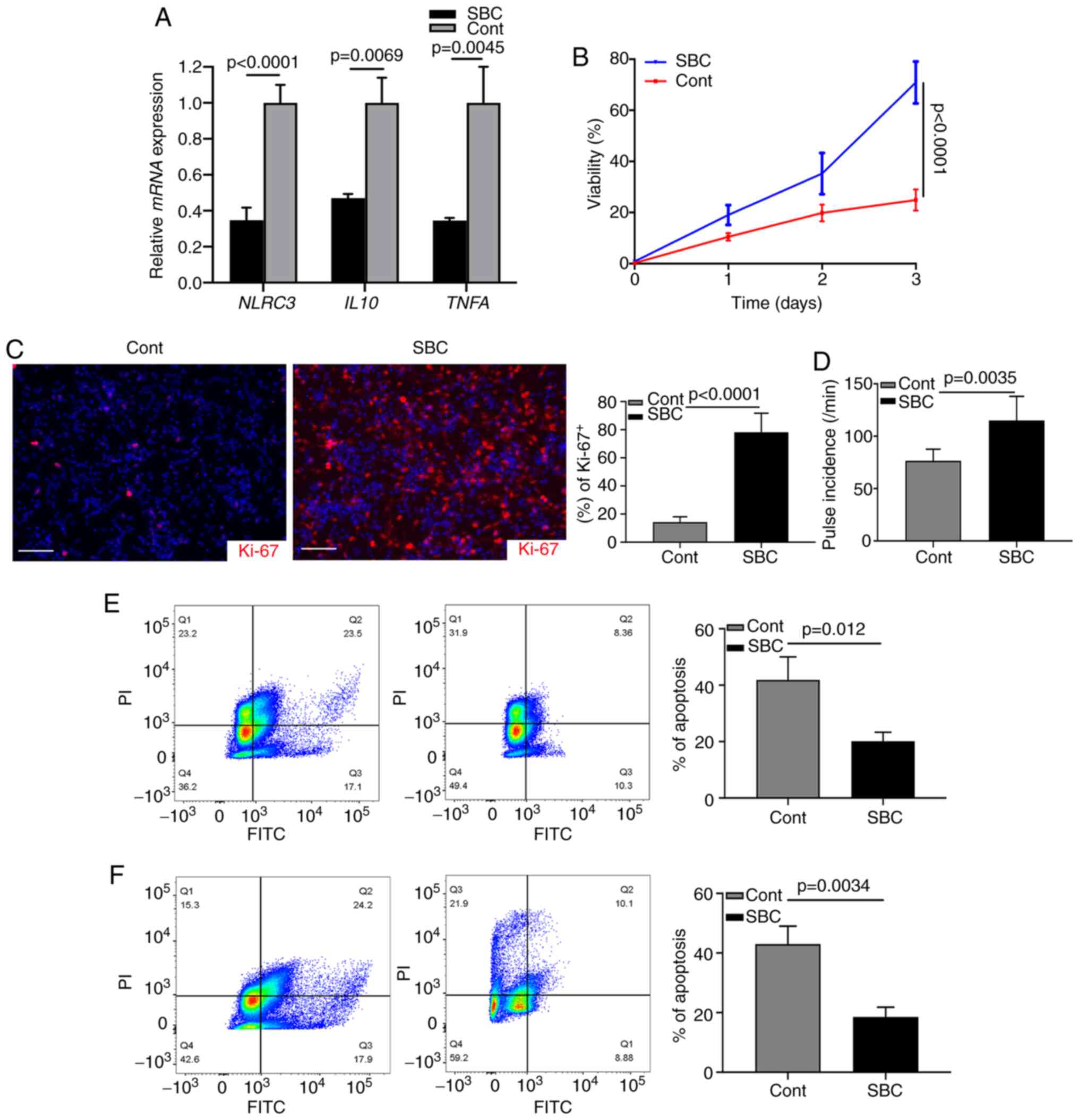|
1
|
King KC and Goldstein S: Congestive heart
failure and pulmonary edema. StatPearls. StatPearls Publishing;
Treasure Island, FL: 2021
|
|
2
|
Ingram DD, Malec DJ, Makuc DM,
Kruszon-Moran D, Gindi RM, Albert M, Beresovsky V, Hamilton BE,
Holmes J, Schiller J and Sengupta M: National center for health
statistics guidelines for analysis of trends. Vital Health Stat.
2:1–71. 2018.PubMed/NCBI
|
|
3
|
Malik A, Brito D and Chhabra L: Congestive
heart failure. StatPearls. StatPearls Publishing; Treasure Island,
FL: 2021
|
|
4
|
Skrzypek A, Mostowik M, Szeliga M,
Wilczyńska-Golonka M, Dębicka-Dąbrowska D and Nessler J: Chronic
heart failure in the elderly: Still a current medical problem.
Folia Med Cracov. 58:47–56. 2018.PubMed/NCBI
|
|
5
|
Côté E: Feline congestive heart failure:
Current diagnosis and management. Vet Clin North Am Small Anim
Pract. 47:1055–1064. 2017. View Article : Google Scholar
|
|
6
|
Bozkurt B, Aguilar D, Deswal A, Dunbar SB,
Francis GS, Horwich T, Jessup M, Kosiborod M, Pritchett AM,
Ramasubbu K, et al: Contributory risk and management of
comorbidities of hypertension, obesity, diabetes mellitus,
hyperlipidemia, and metabolic syndrome in chronic heart failure: A
scientific statement from the American heart association.
Circulation. 134:e535–e578. 2016. View Article : Google Scholar : PubMed/NCBI
|
|
7
|
Bedi KC Jr, Snyder NW, Brandimarto J, Aziz
M, Mesaros C, Worth AJ, Wang LL, Javaheri A, Blair IA, Margulies KB
and Rame JE: Evidence for intramyocardial disruption of lipid
metabolism and increased myocardial ketone utilization in advanced
human heart failure. Circulation. 133:706–716. 2016. View Article : Google Scholar : PubMed/NCBI
|
|
8
|
Piccoli MT, Gupta SK, Viereck J,
Foinquinos A, Samolovac S, Kramer FL, Garg A, Remke J, Zimmer K,
Batkai S and Thum T: Inhibition of the cardiac fibroblast-enriched
lncRNA Meg3 prevents cardiac fibrosis and diastolic dysfunction.
Circ Res. 121:575–583. 2017. View Article : Google Scholar : PubMed/NCBI
|
|
9
|
Souders CA, Bowers SL and Baudino TA:
Cardiac fibroblast: The renaissance cell. Circ Res. 105:1164–1176.
2009. View Article : Google Scholar : PubMed/NCBI
|
|
10
|
Frangogiannis NG: Cardiac fibrosis: Cell
biological mechanisms, molecular pathways and therapeutic
opportunities. Mol Aspects Med. 65:70–99. 2019. View Article : Google Scholar : PubMed/NCBI
|
|
11
|
Zhang P, Su J and Mende U: Cross talk
between cardiac myocytes and fibroblasts: From multiscale
investigative approaches to mechanisms and functional consequences.
Am J Physiol Heart Circ Physiol. 303:H1385–H1396. 2012. View Article : Google Scholar : PubMed/NCBI
|
|
12
|
Batista-Almeida D, Martins-Marques T,
Ribeiro-Rodrigues T and Girao H: The role of proteostasis in the
regulation of cardiac intercellular communication. Adv Exp Med
Biol. 1233:279–302. 2020. View Article : Google Scholar : PubMed/NCBI
|
|
13
|
Karki R, Man SM and Kanneganti TD:
Inflammasomes and cancer. Cancer Immunol Res. 5:94–99. 2017.
View Article : Google Scholar : PubMed/NCBI
|
|
14
|
Zhou W, Chen C, Chen Z, Liu L, Jiang J, Wu
Z, Zhao M and Chen Y: NLRP3: A novel mediator in cardiovascular
disease. J Immunol Res. 2018:57021032018. View Article : Google Scholar : PubMed/NCBI
|
|
15
|
van de Veerdonk FL, Joosten LA and Netea
MG: The interplay between inflammasome activation and antifungal
host defense. Immunol Rev. 265:172–180. 2015. View Article : Google Scholar : PubMed/NCBI
|
|
16
|
Man SM and Kanneganti TD: Regulation of
inflammasome activation. Immunol Rev. 265:6–21. 2015. View Article : Google Scholar : PubMed/NCBI
|
|
17
|
Palomo J, Dietrich D, Martin P, Palmer G
and Gabay C: The interleukin (IL)-1 cytokine family-Balance between
agonists and antagonists in inflammatory diseases. Cytokine.
76:25–37. 2015. View Article : Google Scholar : PubMed/NCBI
|
|
18
|
Qiu Z, He Y, Ming H, Lei S, Leng Y and Xia
ZY: Lipopolysaccharide (LPS) aggravates high glucose- and
hypoxia/reoxygenation-induced injury through activating
ROS-Dependent NLRP3 inflammasome-mediated pyroptosis in H9C2
cardiomyocytes. J Diabetes Res. 2019:81518362019. View Article : Google Scholar : PubMed/NCBI
|
|
19
|
Zhang YZ, Sui XL, Xu YP, Gu FJ, Zhang AS
and Chen JH: NLRP3 inflammasome and lipid metabolism analysis based
on UPLC-Q-TOF-MS in gouty nephropathy. Int J Mol Med. 44:172–184.
2019.PubMed/NCBI
|
|
20
|
King M, Kingery J and Casey B: Diagnosis
and evaluation of heart failure. Am Fam Physician. 85:1161–1168.
2012.PubMed/NCBI
|
|
21
|
Murase T, Hattori T, Ohtake M, Abe M,
Amakusa Y, Takatsu M, Murohara T and Nagata K: Cardiac remodeling
and diastolic dysfunction in DahlS.Z-Lepr(fa)/Lepr(fa) rats: A new
animal model of metabolic syndrome. Hypertens Res. 35:186–193.
2012. View Article : Google Scholar : PubMed/NCBI
|
|
22
|
Strutz F, Okada H, Lo CW, Danoff T, Carone
RL, Tomaszewski JE and Neilson EG: Identification and
characterization of a fibroblast marker: FSP1. J Cell Biol.
130:393–405. 1995. View Article : Google Scholar : PubMed/NCBI
|
|
23
|
Rui T, Feng Q, Lei M, Peng T, Zhang J, Xu
M, Abel ED, Xenocostas A and Kvietys PR: Erythropoietin prevents
the acute myocardial inflammatory response induced by
ischemia/reperfusion via induction of AP-1. Cardiovasc Res.
65:719–727. 2005. View Article : Google Scholar : PubMed/NCBI
|
|
24
|
Yao Y, Xu X, Zhang G, Zhang Y, Qian W and
Rui T: Role of HMGB1 in doxorubicin-induced myocardial apoptosis
and its regulation pathway. Basic Res Cardiol. 107:2672012.
View Article : Google Scholar : PubMed/NCBI
|
|
25
|
Livak KJ and Schmittgen TD: Analysis of
relative gene expression data using real-time quantitative PCR and
the 2(-Delta Delta C(T)) method. Methods. 25:402–408. 2001.
View Article : Google Scholar : PubMed/NCBI
|
|
26
|
Strassheim D, Dempsey EC, Gerasimovskaya
E, Stenmark K and Karoor V: Role of inflammatory cell subtypes in
heart failure. J Immunol Res. 2019:21640172019. View Article : Google Scholar : PubMed/NCBI
|
|
27
|
Chen G, Bracamonte-Baran W, Diny NL, Hou
X, Talor MV, Fu K, Liu Y, Davogustto G, Vasquez H, Taegtmeyer H, et
al: Sca-1+ cardiac fibroblasts promote development of
heart failure. Eur J Immunol. 48:1522–1538. 2018. View Article : Google Scholar : PubMed/NCBI
|
|
28
|
Travers JG, Kamal FA, Robbins J, Yutzey KE
and Blaxall BC: Cardiac fibrosis: The fibroblast awakens. Circ Res.
118:1021–1040. 2016. View Article : Google Scholar : PubMed/NCBI
|
|
29
|
Malik A and Kanneganti TD: Inflammasome
activation and assembly at a glance. J Cell Sci. 130:3955–3963.
2017. View Article : Google Scholar : PubMed/NCBI
|
|
30
|
Miteva K, Pappritz K, Sosnowski M,
El-Shafeey M, Müller I, Dong F, Savvatis K, Ringe J, Tschöpe C and
Van Linthout S: Mesenchymal stromal cells inhibit NLRP3
inflammasome activation in a model of Coxsackievirus B3-induced
inflammatory cardiomyopathy. Sci Rep. 8:28202018. View Article : Google Scholar : PubMed/NCBI
|
|
31
|
Bennett M and Gilroy DW: Lipid mediators
in inflammation. Microbiol Spectr. 4(6)2016.
|
|
32
|
Storey BC, Staplin N, Haynes R, Reith C,
Emberson J, Herrington WG, Wheeler DC, Walker R, Fellström B,
Wanner C, et al: Lowering LDL cholesterol reduces cardiovascular
risk independently of presence of inflammation. Kidney Int.
93:1000–1007. 2018. View Article : Google Scholar : PubMed/NCBI
|
|
33
|
Kattoor AJ, Kanuri SH and Mehta JL: Role
of Ox-LDL and LOX-1 in atherogenesis. Curr Med Chem. 26:1693–1700.
2019. View Article : Google Scholar : PubMed/NCBI
|
|
34
|
Stoekenbroek RM, Lambert G, Cariou B and
Hovingh GK: Inhibiting PCSK9-biology beyond LDL control. Nat Rev
Endocrinol. 15:52–62. 2018. View Article : Google Scholar : PubMed/NCBI
|
|
35
|
Rivera AL, Estañol B, Fossion R,
Toledo-Roy JC, Callejas-Rojas JA, Gien-López JA, Delgado-García GR
and Frank A: Loss of breathing modulation of heart rate variability
in patients with recent and long standing diabetes mellitus type
II. PLoS One. 11:e01659042016. View Article : Google Scholar : PubMed/NCBI
|
|
36
|
Afsarmanesh N, Horwich TB and Fonarow GC:
Total cholesterol levels and mortality risk in nonischemic systolic
heart failure. Am Heart J. 152:1077–1083. 2006. View Article : Google Scholar : PubMed/NCBI
|
|
37
|
Foody JM, Shah R, Galusha D, Masoudi FA,
Havranek EP and Krumholz HM: Statins and mortality among elderly
patients hospitalized with heart failure. Circulation.
113:1086–1092. 2006. View Article : Google Scholar : PubMed/NCBI
|
|
38
|
Lee MMY, Sattar N, McMurray JJV and
Packard CJ: Statins in the prevention and treatment of heart
failure: A review of the evidence. Curr Atheroscler Rep. 21:412019.
View Article : Google Scholar : PubMed/NCBI
|
|
39
|
Bahiru E, de Cates AN, Farr MR, Jarvis MC,
Palla M, Rees K, Ebrahim S and Huffman MD: Fixed-dose combination
therapy for the prevention of atherosclerotic cardiovascular
diseases. Cochrane Database Syst Rev. 3:Cd0098682017.PubMed/NCBI
|
|
40
|
Vodonos A, Ostapenko I, Toledano R, Henkin
Y, Zahger D, Wolak T, Sherf M and Novack V: Statin adherence and
LDL cholesterol levels. Should we assess adherence prior to statin
upgrade? Eur J Intern Med. 26:268–272. 2015.PubMed/NCBI
|
|
41
|
Sen S, Petraco R, Mayet J and Davies J:
Wave intensity analysis in the human coronary circulation in health
and disease. Curr Cardiol Rev. 10:17–23. 2014. View Article : Google Scholar : PubMed/NCBI
|
|
42
|
Tanai E and Frantz S: Pathophysiology of
heart failure. Compr Physiol. 6:187–214. 2015. View Article : Google Scholar : PubMed/NCBI
|
|
43
|
Radulović B, Potočnjak I, Dokoza Terešak
S, Trbušić M, Vrkić N, Huršidić Radulović A, Starčević N, Milošević
M, Degoricija V and Frank S: Cholesterol and chloride in acute
heart failure. Acta Clin Croat. 58:195–201. 2019.
|
|
44
|
Zhang J, Zu Y, Dhanasekara CS, Li J, Wu D,
Fan Z and Wang S: Detection and treatment of atherosclerosis using
nanoparticles. Wiley Interdiscip Rev Nanomed Nanobiotechnol.
9:10.1002/wnan.1412. 2017. View Article : Google Scholar
|
|
45
|
Ferrucci L and Fabbri E: Inflammageing:
Chronic inflammation in ageing, cardiovascular disease, and
frailty. Nat Rev Cardiol. 15:505–522. 2018. View Article : Google Scholar : PubMed/NCBI
|
|
46
|
Sochocka M, Donskow-Łysoniewska K, Diniz
BS, Kurpas D, Brzozowska E and Leszek J: The gut microbiome
alterations and inflammation-driven pathogenesis of alzheimer's
disease-a critical review. Mol Neurobiol. 56:1841–1851. 2019.
View Article : Google Scholar : PubMed/NCBI
|
|
47
|
Mount CW, Majzner RG, Sundaresh S, Arnold
EP, Kadapakkam M, Haile S, Labanieh L, Hulleman E, Woo PJ, Rietberg
SP, et al: Potent antitumor efficacy of anti-GD2 CAR T cells in
H3-K27M+ diffuse midline gliomas. Nat Med. 24:572–579.
2018. View Article : Google Scholar : PubMed/NCBI
|
|
48
|
Sowers JL, Johnson KM, Conrad C, Patterson
JT and Sowers LC: The role of inflammation in brain cancer. Adv Exp
Med Biol. 816:75–105. 2014. View Article : Google Scholar : PubMed/NCBI
|
|
49
|
Wei L, Ye H, Li G, Lu Y, Zhou Q, Zheng S,
Lin Q, Liu Y, Li Z and Chen R: Cancer-associated fibroblasts
promote progression and gemcitabine resistance via the SDF-1/SATB-1
pathway in pancreatic cancer. Cell Death Dis. 9:10652018.
View Article : Google Scholar : PubMed/NCBI
|
|
50
|
Kanbay M, Yerlikaya A, Sag AA, Ortiz A,
Kuwabara M, Covic A, Wiecek A, Stenvinkel P and Afsar B: A journey
from microenvironment to macroenvironment: The role of
metaflammation and epigenetic changes in cardiorenal disease. Clin
Kidney J. 12:861–870. 2019. View Article : Google Scholar : PubMed/NCBI
|
|
51
|
Parry TL, Melehani JH, Ranek MJ and Willis
MS: Functional amyloid signaling via the inflammasome, necrosome,
and signalosome: New therapeutic targets in heart failure. Front
Cardiovasc Med. 2:252015. View Article : Google Scholar : PubMed/NCBI
|














